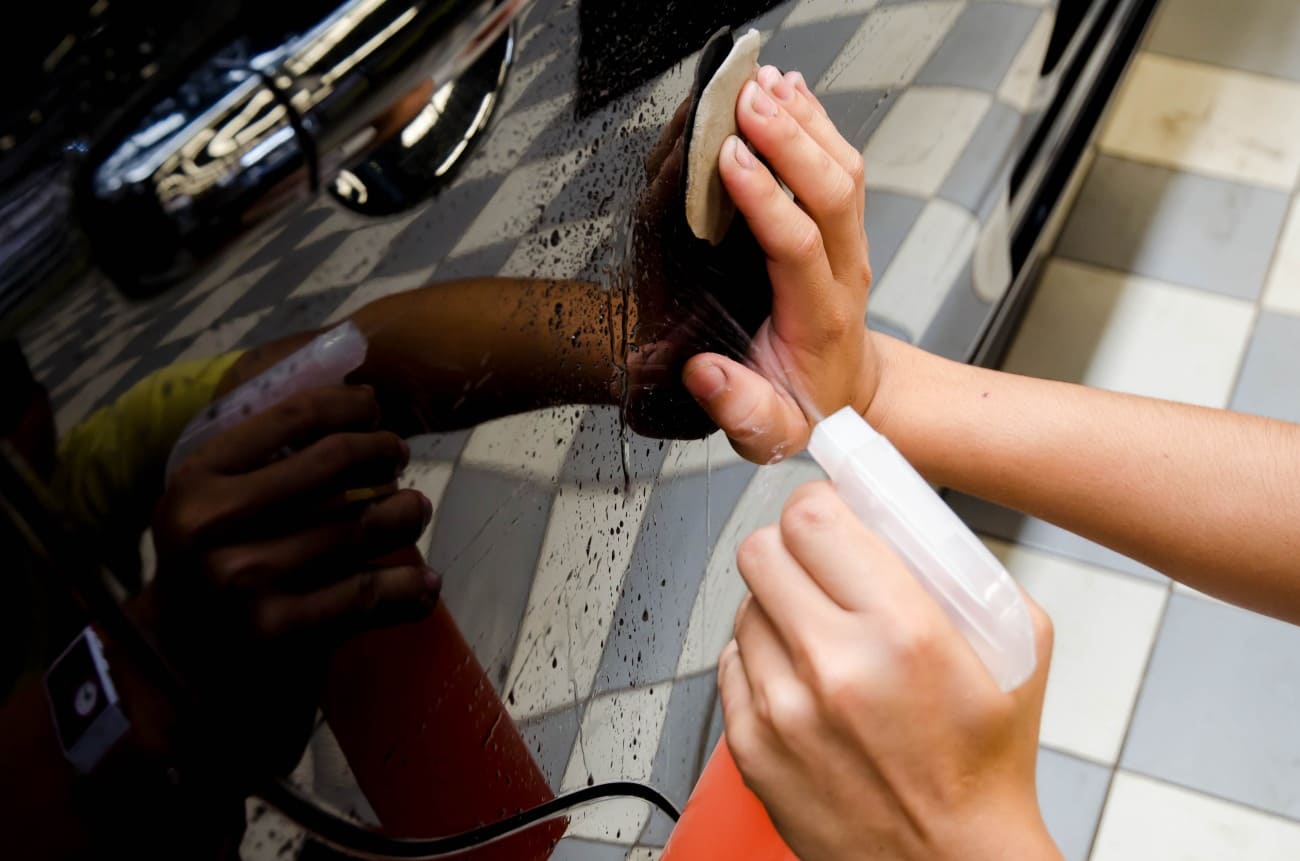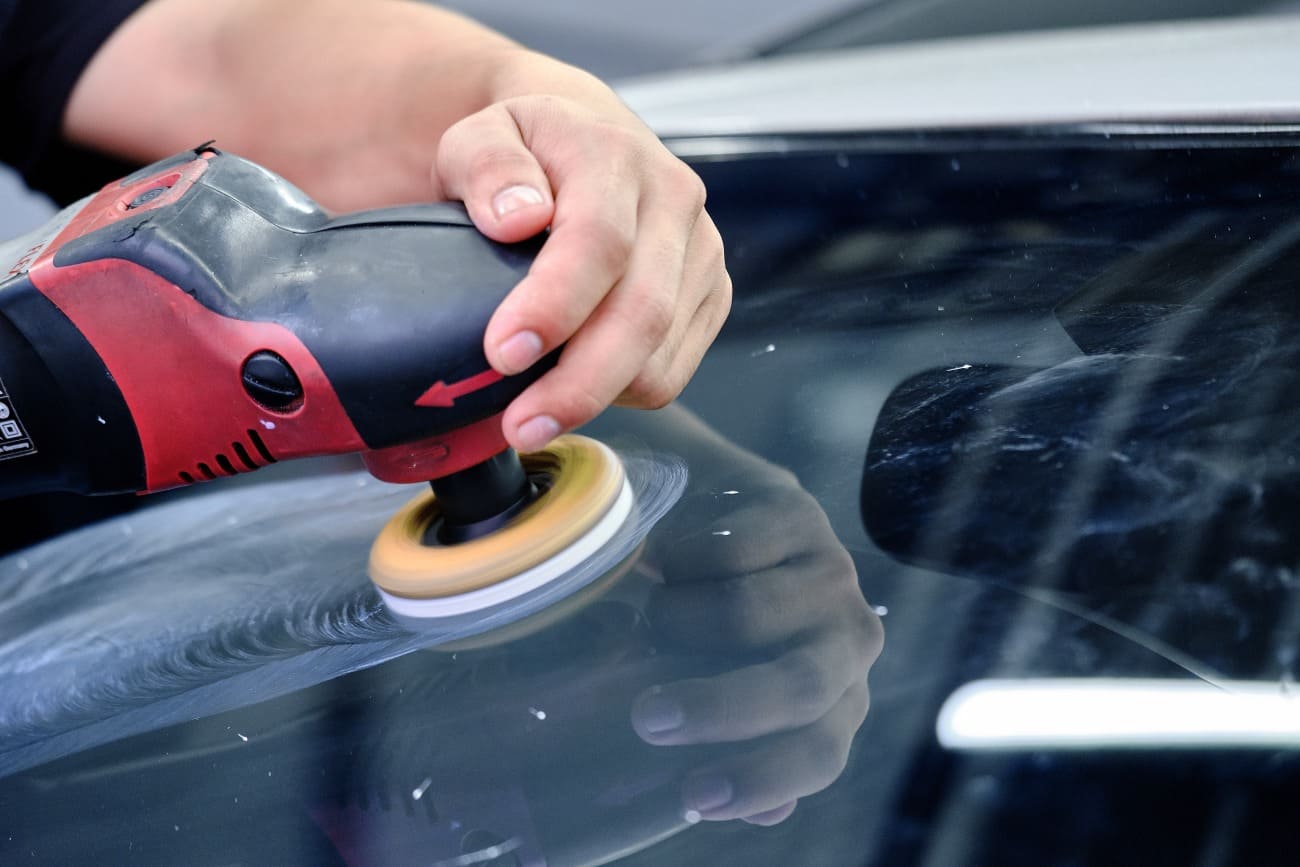Show table of contents
What is detailing clay?What types of detailing clay are there?
When should I use them?
Where on the car can clay be used?
How do I use detailing clay?
Can I use a clay bar without polishing afterwards?
Which lubricant should I use for detailing clay?
Detailing clay: What is it and how do you use it?
Whenever you want to polish and possibly seal your car, a thorough cleaning is necessary beforehand to remove deeply embedded dirt and paint impurities. Fortunately, there’s just the right product for this: clay bar.
You’ll find out exactly what a clay bar is and how to use it to clean your car in this article.
What is detailing clay?
Clay bars are used to clean automotive paint and are designed to remove embedded contaminants and rough spots from the surface. Clay bars are often very flexible and can remove brake dust, industrial fallout, oxidation, and tree sap from the paint.
You may have heard of detailing clay under the names clay bar, paint clay, or cleaning clay.
If you want to polish or seal your car, it’s especially important to use a clay bar on the paint first. This gives you a clean surface as a base for the sealant, and the polishing results on the “pre-smoothed” paint are much better. Compared to polish, clay bars only remove contaminants and don’t strip away any paint.
What types of detailing clay are there?
Clay bars often come in three color-coded grades. Depending on how dirty your car is, you can choose the right grade. (Note: we consider this three-grade system outdated. A modern clay bar with a “medium” grade is usually suitable as an all-in-one solution.)
- Coarse (usually red/purple): for especially heavy dirt and buildup
- Medium (white, gray, yellow, or green): great all-rounder
- Mild (blue or white): gentle, but too weak for heavy contamination
In addition to traditional detailing clay, there are also sponges (clay blocks) and gloves (clay mitts) that feature a thin special layer similar to the surface of clay. The advantage is that they’re washable, since dirt doesn’t stick as much. However, this is also a drawback, because you have to keep cleaning them during use to remove loosened dirt particles. If you don’t, you might end up with scratches in your paint.
When should I use them?
You can’t always tell just by looking whether your car needs to be clayed. But you can feel it. Run your fingers over the slightly damp paint. If it feels as smooth as glass, no cleaning is needed. If it feels rough, you should use detailing clay. On light-colored vehicles, you can sometimes see so-called "rail dust particles" with the naked eye. These appear as tiny orange specks.
As previously mentioned, in almost all cases, cleaning before polishing or sealing is recommended. Otherwise, you risk sealing in defects or contaminants between the sealant and the paint. You can use a clay bar on the paint several times a year.
Where on the car can clay be used?
Whether it’s paint, windows, headlights, or rims—clay bar can be used on almost all surfaces of your car. However, it’s best suited for the paint.
However, you should be cautious with matte paint, as the mildly abrasive action of the clay could unintentionally create shiny spots. When working on matte paint, use very little pressure and first test compatibility in an inconspicuous area. Clay is generally not useful for interior surfaces.
How do I use detailing clay?
Luckily, you don’t have to be a pro to use detailing clay. Beginners can handle it without much trouble. Still, you should follow the steps below to achieve shiny results.
1. Pre-wash
First, you should remove any easily washable dirt from your car. Hand washing is best for this. For example, we recommend Safe-Shield’s Ultra Wash & Foam Car Shampoo.
2. Use a clay bar
Step two is to use the detailing clay. Break it into manageable pieces and shape one piece into a ball. Then flatten it so it fits comfortably in your palm. This gives you a good grip and enough surface area.
Next, spray the areas to be treated with lubricant. Don’t be stingy here, because clay can damage dry paint. Also spray the clay itself with lubricant before applying it to the prepared area.
Work in small motions and don’t press too hard. At first, the clay will tend to stick to dirty spots. The more you go over these areas, the less resistance you’ll feel. Check periodically to see how much dirt has collected on the clay, and fold it over if needed to expose a clean surface.
You can also remove larger loosened dirt from the clay with a damp microfiber cloth to avoid scratches. Then, spray more lubricant. Any lubricant residue left on the paint can easily be removed with a microfiber cloth. The paint should now feel mirror-smooth when you run the back of your hand over it.
By the way: If the clay is already completely dirty or has fallen on the ground, it’s better to use a new piece to avoid scratching the paint.
3. Post-cleaning
Once you’re done cleaning, it doesn’t hurt to wash the car again. This helps remove any remaining lubricant residue and leaves the paint sparkling clean. Afterwards, you can dry the treated areas with a microfiber cloth.
4. Polishing and Sealing
After using detailing clay, you can then polish and seal the paint. This keeps it clean for the long term and maintains the high-gloss finish longer.
After cleaning, slightly moisten any leftover detailing clay and put it back in its original storage box. This way, you can keep it for a longer period of time. Make sure the clay isn’t exposed to extreme heat or cold, as the material doesn’t handle that well.
Can I use detailing clay without polishing afterward?
Of course, you can also use detailing clay without polishing the paint afterward. Whether this makes sense depends on your goal. For example, if you want to seal your car, you’ll need to polish it first.
However, if you’re only using the cleaning clay to remove deeply embedded insect and tar stains from your car, you don’t necessarily have to polish afterward.
Even after cleaning with detailing clay, small micro-scratches can appear in the paint—even for professionals. These are usually not visible, but can still affect the overall finish.
If you want flawless shine, you should definitely polish your car after using a clay bar.
Which lubricant should I use for detailing clay?
A lubricant ensures that the detailing clay glides gently and effortlessly over the paint without leaving scratches. To make sure both work well together, you should use clay and lubricant from the same manufacturer.
While it is possible to make your own lubricant, we only recommend this if you really know what you’re doing. For example, a lubricant with dish soap will cause detailing clay to break down. Pure water isn’t really suitable either, as it doesn’t offer good lubrication.
A mixture of car shampoo and water is also possible. Just a few drops of car shampoo are enough.
If you want to clean your paint, you can order detailing clay directly from us, as well as car shampoo to make your own lubricant. Shipping takes just a few business days, so you’ll have a sparkling clean car in no time. Sounds great, doesn’t it?
Back to top of page



Leave a comment
All comments are moderated before being published.
This site is protected by hCaptcha and the hCaptcha Privacy Policy and Terms of Service apply.